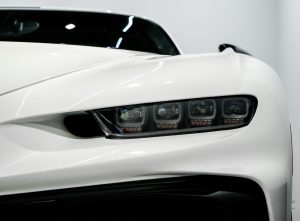Comparing Plug-In Hybrids and Full Electrics: What’s Best for You?
The automotive industry has been making great strides in producing more environmentally friendly vehicles. With the rising concern over climate change and air pollution, many car manufacturers have turned towards producing hybrid and electric cars. However, if you are in the market for a new car, the options can be overwhelming. Among the different types of eco-friendly cars, plug-in hybrids and full electrics are two popular choices. Each type has its own set of advantages and disadvantages, making it challenging to decide which one is the best for you. In this article, we will compare plug-in hybrids and full electrics to help you make an informed decision.
The Basics of Plug-In Hybrids and Full Electrics
Plug-in hybrids, also known as PHEVs, are vehicles that combine a traditional gasoline engine with an electric motor. These cars can run on electric power for short distances, typically 10 to 50 miles, before switching to gasoline. On the other hand, full electrics, or EVs, solely rely on electric power and do not have a gasoline engine. This means they need to be plugged in to a charging station or wall outlet to recharge their batteries. Let’s dive deeper into the comparison between these two types of eco-friendly cars.
1. Cost
When it comes to the cost of the car itself, plug-in hybrids and full electrics have a significant difference. Generally, plug-in hybrids are cheaper than full electrics because of the additional gasoline engine and bigger battery packs in EVs. However, in the long run, full electrics can be more cost-efficient due to their lower maintenance costs and minimal fuel expenses. Government incentives and tax credits may apply to both types, making them more affordable for consumers.
2. Driving Range
One of the main concerns of consumers when considering electric cars is the driving range. Full electrics can travel an average of 200 to 300 miles on a single charge, while plug-in hybrids usually have a range of 10 to 50 miles on electric power. The advantage of plug-in hybrids is their ability to switch to gasoline when the battery runs out, meaning they can still travel long distances without the need for frequent charging. On the other hand, EVs need to be charged before they can continue their journey.
3. Performance
In terms of performance, full electrics have the upper hand. They have a quicker acceleration and better torque than plug-in hybrids. This is because electric motors deliver maximum torque immediately, while gasoline engines need to build up speed. However, plug-in hybrids can have a better range and performance than traditional gasoline cars, providing a smooth and quiet ride even on electric power.
4. Charging Time and Infrastructure
Charging time and infrastructure are crucial factors to consider when owning an electric car. Plug-in hybrids can be charged using a standard 120-volt outlet, while full electrics require a 240-volt charging station for faster charging. These stations are not as widespread as gas stations, but they are continuously increasing in number. Additionally, charging a plug-in hybrid takes less time than a full electric since it has a smaller battery pack. This can be advantageous for those who often take long trips.
Which One is Best For You?
Choosing between a plug-in hybrid and a full electric ultimately depends on your driving habits and lifestyle. If you have a commute that is less than 50 miles, a plug-in hybrid might be the best option, giving you the flexibility to switch to gasoline when needed. On the other hand, if you live in an area with good charging infrastructure and have a longer commute, a full electric might be the better choice. Additionally, full electrics are better suited for those who want to reduce their carbon footprint and have access to renewable energy sources like solar panels.
In conclusion, both plug-in hybrids and full electrics have their own set of advantages and disadvantages. Plug-in hybrids can offer the convenience of having both electric and gasoline power, while full electrics provide a cleaner and more environmentally friendly driving experience. It is essential to consider your budget, driving habits, and charging infrastructure in choosing the best option for you. With the continuous improvement and innovation in the automotive industry, the future of eco-friendly cars looks brighter than ever. Whichever type you choose, you will certainly contribute to a more sustainable future.








